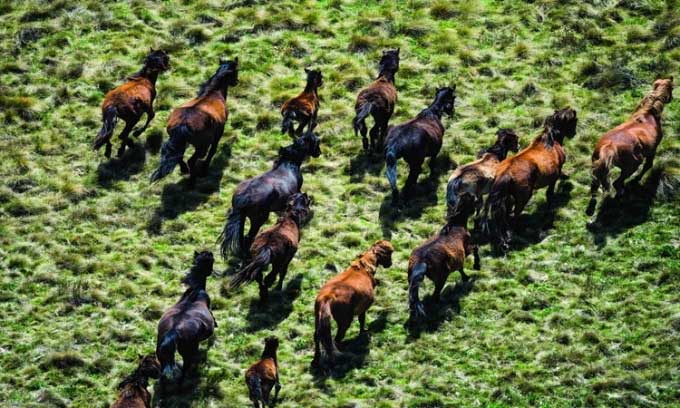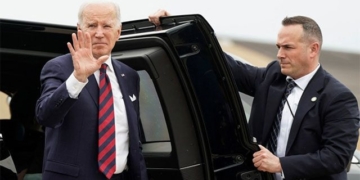The New South Wales authorities plan to cull 14,000 wild horses from helicopters to save the ecosystem and native wildlife.
It is estimated that 17,432 wild horses are roaming in the Kosciuszko National Park, which spans 6,734 km2 in New South Wales (NSW), southeastern Australia. To reduce the population to 3,000 horses by June 2027 as mandated by law, local authorities are conducting an aerial cull to shoot the horses from helicopters, Newsweek reported on December 6.

Wild horses in Kosciuszko National Park. (Photo: The Australian).
Wild horses are considered an invasive species in Australia, with a total population of 400,000 across the country. They are descendants of horses brought to Australia by European settlers. They threaten the local ecosystem through grazing, trampling the soil, and damaging native plant species, especially in the Australian Alps, according to the Invasive Species Council, an organization dedicated to protecting nature from harmful animals, weeds, and diseases.
In Kosciuszko National Park, surveys conducted by the New South Wales National Parks and Wildlife Service estimated the number of horses to be between 14,501 and 23,535 in 2022. The survey in 2023 indicated a range of 12,934 to 22,536 horses. In 2016, there were only about 6,000 horses in this national park.
Previous measures implemented to reduce the horse population over the years included trapping, relocation, sedation, and ground shooting, but these have not successfully led to a significant decrease in numbers. Notably, trapping has proven to be very costly and inhumane, as horses are transported long distances and ultimately sent to slaughterhouses.
Currently, the NSW government hopes that shooting from helicopters will significantly reduce the wild horse population. Survey results indicate that the NSW authorities will not meet the target of 3,000 horses by mid-2027 under the current approach without aerial shooting.
In the aerial shooting program, authorities deploy two helicopters, each carrying a veterinarian. According to the state government announcement, the horses will be killed quickly and with minimal suffering. All horses shot will be assessed by a veterinarian.
“No one wants to see animals killed, but the sad reality is that we have to choose between drastically reducing the wild horse population or accepting the destruction of the sensitive ecosystems and habitats in the highlands, leading to the decline and extinction of native animals. Culling them through well-trained marksmen is the only viable way to reduce the horse population and save the national park and the native wildlife living there,” said Jack Gough, director at the Invasive Species Council.



















































